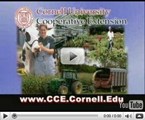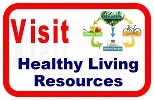With today’s four-wheel drive vehicles and cell phone technology, winter travel may seem presumably safe. But drivers can easily encounter dangerous situations with little or no warning. For example, a blinding snowstorm makes the road impassible, so you decide to pull over and wait out the storm. Or what do you do if your vehicle goes off the road?
Assembling a kit of some basic items may help the driver and passengers survive hazardous winter travel. The Federal Emergency Management Agency (FEMA) has made recommendations on things to include in a winter vehicle emergency kit. The kit should contain: blanket or sleeping bag; small shovel; windshield scraper; battery-powered or crank-style radio; flashlight with extra batteries; water; snack food such as candy bars, raisins, dried fruit or granola bars; warm clothes such as insulated coveralls, jacket, hat, gloves, socks and boots; tow chain or rope; tire chains; bag of road salt or sand, or non-skid mats to use for traction if the vehicle is stuck; fluorescent distress flag, a bright bandanna tied to an antenna will work; jumper/booster cables; basic road maps; emergency flares or reflectors; two-way radio, if available; basic first aid kit; two or more day supply of medications; candle, coffee can and matches stored in water-proof container; pocket knife; and basic tools.
The kit can be assembled in a duffle bag, plastic tote, back pack, small suitcase or any container that can be securely closed and is generally waterproof. If possible, store the kit in an easily accessible place in the vehicle so people can access it without having to get out of the vehicle.
Vehicle maintenance is always important. However, several items are particularly important for winter preparation. Check or have a mechanic check the following items:
antifreeze level, ensure it is sufficient to avoid freezing; battery and ignition system should be in top condition and battery terminals should be clean; brakes should be free of wear and fluid levels should be at manufacturer specification; exhaust system should be free of leaks and crimped pipes to avoid carbon monoxide poisoning; replace dirty or worn fuel and air filters; keep water out of the system by using additives and maintaining a full tank of gas, a full tank will keep the fuel line from freezing; ensure the heater and defroster are working properly; ensure all lights and flashing hazard lights are working properly; check oil level and weight, heavier oils congeal more at low temperatures and do not lubricate as well; ensure the thermostat is working properly; repair any problems with windshield wiper equipment and maintain proper washer fluid level; install good winter tires, make sure the tires have adequate tread. All-weather radials are usually adequate for most winter conditions. However, some jurisdictions require that to drive on their roads, vehicles must be equipped with chains or snow tires with studs.
According to the U.S. Department of Commerce, about 70 percent of automobile accidents resulting in death are ice- or snow-related. Another 25 percent of winter deaths can be attributed to people being caught out in a storm. The National Weather Service reports that many people die each year when they attempt to leave their vehicle during a storm to walk to safety. Instead, stranded drivers should stay with the car, tie a piece of cloth to the car's antenna, and keep the car running while using the heater 10 minutes each hour. People should remember to keep their interior lights on while the engine is running, and to avoid hypothermia by constantly moving their arms and legs.
Visit www.ccefm.com to download a new smartphone application from the North Dakota State University Extension Service designed to help motorists stuck in winter weather. It is available free for both Android and iOS systems. The app will help stranded drivers find their current location, call 911, notify friends and family, calculate how long the engine can run to keep warm and stay safe from carbon monoxide poisoning. It can also be used to store important phone and policy numbers for insurance or roadside assistance, as well as designate emergency contacts to be alerted if the driver becomes stranded.
Additional resources for emergency preparedness can be found at the New York Extension Disaster Education Network http://emergencypreparedness.cce.cornell.edu/Pages/default.aspx
For local information about nutrition and health, 4-H youth development, horticulture and agriculture, contact Cornell Cooperative Extension in Fulton and Montgomery Counties, 673-5525, visit us on the web at www.ccefm.com, or find us on Facebook.




